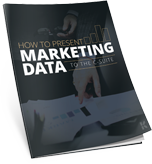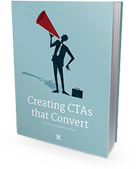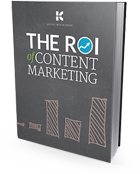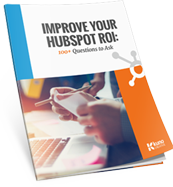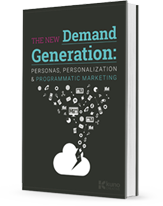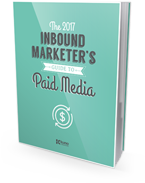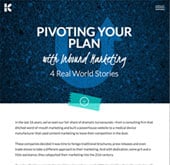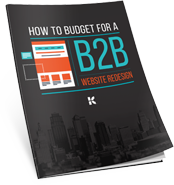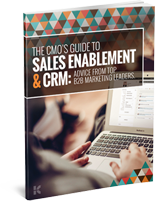Digital Marketing Terms to Know
themselves, digital marketing services are becoming more necessary for businesses
to be successful and thrive in today's digital age.

Just as technology is always progressing, so do the key digital marketing terms
While terms such as search engine optimization (SEO), inbound marketing, content marketing and social media marketing will always play an integral part, digital marketing continues to introduce new terms to implement an effective marketing plan in our digital-focused world.
Don't let your digital marketing become outdated. Take a look at this list of must-know digital marketing terms we compiled to help you stay on top of your digital marketing services moving forward.
A
Account-Based Marketing (aka, Key Account Marketing) — a marketing strategy that focuses on highly targeted companies determined to be the best fit for your product or service; each target is treated as its own market with a strategy tailored directly to them.
Ads Extensions — additional pieces of information that can be added to Google Ads ads to help advertisers create richer, more informative ads, including reviews, address, pricing, callouts, app downloads, site links, and click-to-call.
Ad Network — a grouping of websites or digital properties (like apps) where ads can appear. For example, Google has two ad networks: the search network (text ads that appear in search results) and the display network (image ads that appear on millions of websites that have partnered with Google).
Aggregation — the process of collecting social media content from multiple platforms—like Twitter, Instagram, and Facebook—into one unified presentation to drive engagement and potentially sales.1.
Always-on Lifecycle Marketing — your existing customers should be proactively targeted to leverage new sales opportunities within your customer base. This requires creating a customer lifecycle marketing mindset — including treating current customers as potential customers.
Analytics — metrics used to monitor and improve performance in marketing and advertising campaigns
Anchor Text — the clickable words in a hyperlink and a ranking signal to Google, providing context about the destination site.
Algorithm Update — a change made to a Google algorithm, which typically affects website rankings. Google makes hundreds of algorithms adjustments each year, as well as several major updates.
Artificial Intelligence (AI) — an area of computer science that emphasizes the creation of intelligent machines that work and react like humans, including speech recognition, learning, planning, and problem-solving.
Artificial Intelligence Marketing (AIM) — the automation of gathering and interpreting customer insights to improve the customer journey and boost marketing campaign ROI. This is achieved by using big data analytics, machine learning, and other intelligent processes to gain insight into a specific target audience.
Average Revenue Per User (ARPU) — the measurement of revenue generated per unit or per user. It is typically calculated as total revenue divided by the number of units, users, or subscribers. For marketers, ARPU provides direct insight into which website actions, such as personalization and optimization, translate into revenue.
B
Bot — an application that performs an automated task; most recently, marketers are using chatbots to better communicate with website visitors.
Bounce — a website visit in which the visitor looked at only the page he or she landed on, did not interact with, and then left the site.
Bounce Rate (aka, Abandonment Rate) — the percentage of visitors to a website who leave immediately without clicking or interacting with any portion of the page.
Brand Awareness — the extent or level to which a potential consumer can recall and identify a particular product or service; increased brand awareness is one of the two customarily important goals for a digital advertising campaign (the other being a conversion of some kind).
Brand Compliance — consists of making sure a brand image (logo, signage, slogan, any visual elements) and brand voice are consistent across all media.
Branding — creation of a name, logo, slogan and/or design scheme associated with a company, product or service; branding aims to establish a significant and differentiated presence in the market that attracts and retains loyal customers.
Buyer Persona — a semi-fictional representation of ideal customers based on real data about existing customers and market research, which includes demographics, behavior patterns, motivations and goals.
Buyer Journey (aka, Customer Journey, Marketing Funnel, Conversion Path) — the sequence of events before a customer buys something, including prospect awareness, lead conversion, customer sales and customer delight.
C
Campaign — a series of messages that share a strategy, theme and time frame while marketing a product or service; campaigns can run through search and display network advertising platforms (i.e., Google, Bing), social media, email or other online platforms.
Click-Through-Rate (CTR) — a metric showing how often people click on an ad after seeing it, which helps determine the ads messaging match and search relevance. It can be calculated by dividing the number of clicks on the ad divided by the number of impressions (how many times it was seen).
Contact Form — a section on a website with fillable fields for visitors to contact the website owner, most commonly used to collect the name, phone number and email address of potential customers.
Content Amplification — the process of helping content reach a significantly wider audience; the practice encompasses many individual techniques, strategies and methods such as through paid advertising on social media or leveraging a corporate email list.
Content Marketing — a way to market products and services to a target audience with content they find educational or entertaining.
Contextual Marketing — a direct form of marketing that serves targeted advertising based on a potential client’s likes and interests.
Conversational AI — the set of technologies behind automated messaging and speech-enabled applications that offer human-like interactions. Conversational AI communicates like humans by recognizing speech and text, understanding intent, understanding different languages, and responding in ways that mimic human conversation. Conversational AI solutions can be offered over both text and voice modalities, and the channels and devices that offer support these modalities.
Conversion — the completion of a pre-defined goal, such as converting a prospect into a lead or a lead into a paying customer.
Conversion Rate — the rate at which visitors to a website complete the predefined goal.
Conversion Rate Optimization (CRO) — a branch of digital marketing that aims to improve the conversion rate of web pages, thus, making the pages more profitable.
Cost Per Acquisition (CPA) — a metric in paid advertising platforms that measures how much money is spent to acquire a new lead or customer.
Cost Per Click (CPC) — the amount of money spent for a click on an ad in a Pay-Per-Click (PPC) campaign. In the Ads platform, each keyword has an estimated click cost, but the prices change in real-time as advertisers bid against one another for each keyword.
Cost Per Thousand (CPM) — the amount advertisers pay for 1,000 impressions of their ads. The “M” is derived from the Latin word for 1,000 (mille).
Customer Acquisition Cost (CAC) — the cost associated with persuading a new customer to buy a product or service; calculated by dividing all costs spent in acquiring customers by the number of customers acquired during the time in which the money was spent.
Customer Consent — asking users for permission to collect, process and store their data for use in email communications and personalized advertising.
Customer Data Ethics — this concept is about aligning business practices with moral and ethical policies. In marketing, customer data ethics is important in consumer segmentation, mobile marketing, advertising targeting, passive data collection, customer service and loyalty programs. The need for customer data ethics is based on two factors: the market power of a few digital technology giants who control massive quantities of customer data, and consumers’ concerns about how their data is being collected and used.
Customer Onboarding — the customer onboarding process defines how a new customer progresses from the beginning of his or her relationship with a company (typically with a purchase) into a long-term relationship. The process is based on both the strength of a customer’s initial connection, and his or her ongoing interaction with a brand. The onboarding process is a crucial step in the customer journey. Companies must get it right to ensure optimum customer satisfaction.
Customer Relationship Management Software (CRM) — a category of software that covers a broad set of applications designed to help businesses manage a wide variety of marketing and business processes. Marketing functions include prospect acquisition, sales lead tracking, customer data, customer interactions, automated sales and more. Business functions include contacts, employees, clients, contract wins and more.
D
Dark Post —sponsored content that does not appear on your timeline, feed or profile, rather they appear on feeds of the users you are targeting.
Dashboard — a web page that pulls data from various sources about the performance of a website or digital marketing campaign and displays aggregate data on a single tool.
Demand Generation — the focus of targeted marketing programs to drive awareness and interest in a company’s products or services.
E
Email Automation — a marketing system that uses software to automatically send emails based on defined triggers; multiple automated emails in a sequence are used to create user funnels and segment users based on behavior.
Email Marketing — using email to acquire sales, customers or any other conversions.
F
Facebook Advertising — a range of ad types can be created on Facebook to reach various goals set by companies; audiences are based on vast demographic information that Facebook has about users.
Facebook Ads Manager — a tool for creating Facebook ads, managing when and where they’ll run, and tracking how well campaigns are performing.
G
Geotargeting — helps target a specific audience or demographic based on their location.
Google Ads — a Google-owned program used to place ads on Google search results pages, YouTube and Google ad network sites. Ads is the primary platform for pay-per-click (PPC) advertising.
Google Analytics — a platform that allows webmasters to collect statistics and data about website visitors, including where web traffic comes from and how visitors behave once on the site.
Google Search Console (formerly Webmaster Tools) — a free tool Google offers to webmasters to monitor performance, such as traffic, website visibility on search pages and site performance.
Graphical Search Inventory — Images and banner ads are tied to particular search terms on a search engine, which can be tracked and attributed properly using Google Analytics.
H
Hashtag — a keyword (often in a string) attached to a blog post, tweet, social bookmark or media file; help categorize content by subject.
Heatmap — a graphical representation of how users interact with your site, including where users click on a page, how they scroll and what they hover over.
Hyperlocal — when marketers use GPS data to geographically target customers at the extremely local level, especially to market on an individualized level.
Hybrid Events — a combination of in-person and virtual components. They appeared on the scene as the 2019 pandemic shut down in-person events. They've since gained traction and become a fixture of modern event culture. Companies have found that well-planned hybrid events are less expensive than in-person only events and more eco-friendly. Also, these events can be more inclusive of individuals with disabilities, which can make them ideal for accommodating larger audiences.
I
Identity Resolution Marketing — a process that involves matching customer identifiers across devices and touchpoints to a single consumer profile. Identity means knowing who a customer is, what they want and need, and where they are in the buyers’ journey. This is accomplished by creating a connection point between all interactions — on and offline — across mobile apps, stores, the web, email, digital ads and more. Through this process, marketers can recognize individuals among the masses, and craft relevant and consistent personalized messaging.
Impression — a term used in PPC advertising that represents how many people have seen an ad.
Impression Share — the percentage of times viewers see an advertiser’s Pay-Per-Click ad, in relation to the total possible amounts that ad could have been seen.
Inbound Link — A link from another website directed to yours, also known as a “backlink.”
Inbound Marketing — Marketing activities and strategies used for attracting potential users or customers to websites; based on the four key phases of the “buyer’s journey,” so companies can more easily put themselves in front of prospects, leads and customers at the “moment of relevance.
Insights-driven Marketing — the art and science of using analytics and insight to drive business performance and optimize the results from digital marketing.
J
K
Key Performance Indicators (KPI) — personally crafted goals used as a form of measurement to evaluate marketing performance.
Keyword Density — the proportion of keywords to the total number of words in the face copy of a website.
Keyword Proximity — the relative placement of keywords in prominent areas of a web page, including the distance between keywords in the visible text.
Keyword Stemming — the practice adopted by search engines to group search results not only by exact keyword matches, but also by variations of keywords in semantic groups, such as, singular-plural, related suffixes and synonyms.
L
Landing Page — the destination web page where a user lands after clicking on a link (either in an ad or anywhere else) for the purpose of lead generation or directing traffic throughout a site.
Latent Semantic Indexing (LSI) — mathematical method used to determine the relationship between keyword phrases within a piece of content; search engines use this to form a better understanding of text’s subject matter.
Lead — a potential customer in the sales funnel who has communicated with a business typically via an online form.
Lead Generation — the process of attracting and converting prospects into leads after converting them from visitors and before selling them products or services.
Linkbait (aka, Clickbait) — a tactic where a creator is trying to get links or shares back to an article through sensationalism or baiting egos.
Link Farm — a website exclusively devoted to listing a large number of links without groupings, categories or structure and discredited by major search engines.
Location Intelligence Marketing — this refers to a process where geospatial data relationships are used to create marketing processes via geotagging. Geotagged data can be combined with store, customer, and local demography data, and then be interpreted by overlaying it onto a map. Visualizing the data can help brands identify new areas to target, reach out to potential customers and improve individual existing consumer value by delivering more personalized service.
Lookalike Audience — a targeting option offered by Facebook’s ad service, created by identifying common characteristics between audience members in a source group (i.e., Facebook page fans).
Long-Tail Keyword — a keyword phrase that is longer in length and hyper-specifically matches a user search query, believed to get less searches per month, but deliver a higher search intent.
Lost Impression Share (Budget) & Lost Impression Share (Rank) - Lost impression share (budget) is the percent of impressions an ad lost out on because of an insufficient budget. Search lost impression share (rank) is the percent of impressions an ad lost out on because of a low ad rank.
M
Machine Learning — a software algorithm that leverages specific data sets and rules programmed by humans; become faster and smarter as they perform the tasks for which they were created.
Marketing Automation — software platforms that automate specific marketing tasks, such as sending emails, posting on social media and managing prospect list creation.
Marketing Localization — since the 2019 pandemic, more consumers have been moving out of urban areas and to the suburbs and rural regions. This has triggered a trend toward localized marketing, with consumers shopping primarily in neighborhood stores, and buying more locally sourced products. For these businesses, localized content and personalization will be important to strengthen a connection with local audiences.
Meta Description — text that describes a web page in 160 characters and that appears in Google searches and other search engine results.
Meta Keywords — a specific meta tag that displays the keywords addresses in a page.
Meta Tags — HTML snippets added to a web page’s code that add contextual information for web crawlers and search engines to help decide what information from a web page to display in their results.
Mobile Marketing — a multi-channel, digital marketing strategy aimed at reaching a target audience on smartphones, tablets or other mobile devices, via websites, email, SMS and MMS, social media and apps.
Mobile Wallet Marketing — a virtual wallet that stores payment information on a mobile device. Google, along with several companies, partnered in 2011 to launch this new mobile payment system. Apple Pay rolled out in 2014, and Google Pay in 2018. Consumers are increasingly using mobile wallets, and the technology is opening new marketing opportunities for brands.
Multichannel Selling — this involves listing products and completing sales on several channels, including marketplaces like Amazon, eBay, Walmart and more. To reach today’s customers, brands must meet them where they are — on their smartphones, tablets and laptops. Shoppers today don’t spend all their money in one place. They jump on perks like faster shipping, lower prices or a more varied selection via multiple channels.
Multi-Touch Attribution — a marketing effectiveness measurement tactic that considers all touchpoints on consumers’ journey into consideration, and assigns fractional credit to each, so that a marketer can see how much influence each channel has on a sale. Multi-touch attribution offers a more sophisticated alternative to traditional, rules-based attribution approaches, such as first- and last-touch, which give all the credit to the first or last marketing touchpoint, before a consumer converts.
N
O
Omnichannel Marketing — a cross-channel approach to marketing meant to provide a uniform experience for buyers.
Optimization — marketers focus on optimization rather than large-scale changes because of the “Law of Incremental Improvements,” which says that small incremental improvements and changes lead to big improvements and changes over time.
Organic — a source of traffic to a website that comes through clicking on a non-paid search engine result; grows as a site ranks better for keywords or ranks for more keywords in search engines.
Outbound Link (aka, external link) — any link on a web page to an external web page.
Owned Media — any media or attention that companies own and control: their website(s), blog and social media channels are primary examples.
P
PageRank — a former proprietary method of Google for measuring the popularity of a web page. It is believed to be influenced chiefly by the number and quality of inbound and outbound links associated with a given page.
Paid Media — external marketing efforts that involve paying for placement. Paid media includes PPC ads, display ads, paid content promotion, social media ads and paid influencers.
Pay-Per-Click (PPC) — online advertising model in which advertisers are charged for their ads once it is clicked. The PPC model is commonly associated with search engine and social media advertising like Google Ad and Facebook Ads.
Personalization Engine — a software that enables marketers to identify, deliver and measure optimum experiences for each individual consumer based on their current context, past interactions and predicted intent. Personalization engines leverage data from user profiles or from tracking anonymous user behavior. Profiles are enhanced with data from real-time behavior, transactions, geography and affinity. The engine helps marketers segment and target audiences, and trigger messaging and content delivery.
Personalized Content — content specifically tailored to both customers’ needs and where they are in the buying process.
Position Zero (aka Ranking #0) — the new top-ranking spot versus the traditional top-ranked search result because it’s placed above the top-ranking search result and displayed differently.
Preference Management — allows consumers to choose communication frequency, topics and channels.
Programmatic Advertising — the process of the algorithmic purchase and sale of advertising space in real-time or buying ad space in an automated way.
Q
Quality Score — Google Ads’ rating of the relevance and quality of keywords used in PPC campaigns; largely determined by the relevance of ad copy, expected click-through rate, as well as the landing page quality and relevance.
Query — the term(s) entered into a search engine by a user.
R
Ranking(s) — the position of a website’s listing(s) in search engine results pages; the higher a rank for a specific keyword, the more generally visible a page is to search engine users.
Real-Time Engagement — responding to prospects, leads and customers in real time, such as on social media, live-streaming an event or a fireside chat session.
Reciprocal Link — a link to a website reciprocated in the form of a backlink, often pre-arranged by sites with mutually benefitting audiences.
Referral — a medium denoted in Google Analytics that represents a website visit that came from another website (as opposed to coming from a Google search, for example); when users click on a link to another, external web page, they are said to have been “referred” there.
Remarketing (aka, Retargeting) — a type of paid ad that allows advertisers to show ads to customers who have visited their site; once a user visits a site, a small piece of data called a “cookie” will be stored in the user’s browser—when the user visits other sites, this cookie can allow remarketing ads to be shown.
Responsive Web Design — the practice of creating a website that allows all of the content to show correctly regardless of screen size or device; the website “responds” to the size of the screen, shrinking and reorganizing on smaller screens, and expanding to fill appropriately on large ones.
Return On Ad Spend (ROAS) — a paid media marketing metric that demonstrates the profit made as compared to the amount of money spent on the ads.
Revenue Operations (RevOps) — a growing trend that requires marketers to become revenue-driven by engaging in practices such as financial modeling, niche targeting and pipeline management. The role of marketers is not just about finding leads, but also tracking their progress through funnels and calculating how much revenue they contribute to a brand. As a result, marketing leaders are increasingly responsible for driving bottom-funnel metrics, such as revenue and growth, as they are for top-of-funnel metrics like awareness and affinity.
S
Schema Markup (aka, Rich Snippets or Structured Data) — code that’s added to the HTML of a website to give search engines more relevant information about a business, person, place or product.
Search Network — a group of websites in which ads can appear; Google’s Search Network, for example, is a group of Google and non-Google websites that partner with Google to show text ads.
Search Engine Marketing (SEM) — a form of marketing that seeks to promote websites by increasing their visibility in search engine results pages (SERPs); SEM is accomplished primarily through paid advertising and SEO, by adjusting and/or re-writing website content to achieve higher search rankings.
Search Engine Optimization (SEO) — the process of affecting the visibility of a website or a web page in a search engine’s unpaid results—often referred to as natural, organic or earned results.
Search Engine Referral — a statistic that represents a visitor who arrives at a website after clicking through a search engine results listing.
Search Engine Results Page (SERP) — the page featuring a list of search results that is returned to the searcher after they submit a query.
Second-Screen — the idea that customers aren’t just behind one screen, but two, such as televisions and smartphones.
Sessions — a metric in Google Analytics that measures one user interacting with a website during a given period of time, which Google defaults to 30 minutes; not dependent on how many pages are viewed, so if a person goes to a website and looks around at different pages for 20 minutes, it would count as one session.
Sitelink — an ad extension in Google Ads that appears below the main ad copy and links to a specific page on the website (i.e., Contact Us, About Us, etc.).
Smart content — content that has been personalized intelligently to meet customers’ needs and served to website visitors using a capable content management system.
Snackable Content — short videos, lists, blurbs, etc., that can be viewed rapidly.
Social Impressions — measures the number of times social media content was viewed.
Social Media Listening (aka, Social Media Monitoring) — the process of identifying and assessing what is being said about a company, individual, product or brand on social media.
Social Media Analytics — data gathered from social media that provides actionable insight on which campaigns are working and which are not working.
SoLoMo — “social, local and mobile”; a buzzword that emphasizes getting in front of customers at all angles and relies on the idea that customers are social beings who like to be social in local environments where things are relevant to them.
Source — a term in Google Analytics that helps webmasters classify where traffic is coming from (i.e., “source” of the web traffic, such as, a search engine or a domain).
U
Unique Visitors — a metric used in web analytics to show how many different unique people view a website over a period of time, tracked by their IP addresses.
User Experience (UX) — refers to how a user interacts with a website or app (where they click, which pages they visit); can be shaped by testing differences in page layouts, CTAs, colors, content, etc., to improve conversion rates.
User-Generated Content (UGC) — any piece of content created by a member of a given website’s audience for use on that website, for example, wikis.
User Interface (UI) — the area with which a user interacts with something through a digital device.
V
Video Marketing — a marketing strategy that relies heavily on videos to attract audiences, convert leads, nurture prospects and sell to customers.
Visitors — a metric in Google Analytics that quantifies a website user over a particular period of time; broken down between “new visitors” who are browsing for the first time in the allotted time period, or “returning visitors” who already have browsed at least once in the given time frame.
W
X
Xtensible Markup Language (XML) — similar to HTML (Hypertext Markup Language) in that it is primarily used to categorize various data for computers and humans to use more effectively; allows for customizable tags for marking up information that is otherwise difficult for computers to understand.
XML Sitemap — an XML file for search engines containing a list of URLs on a particular domain; can be used to supplement regular indexing, where a bot or crawler goes out and visits each page of a site by itself.
- © Kuno Creative - All Rights Reserved
- Privacy
- Terms & Conditions
- 3248 West Erie, Lorain, OH 44053
- 800.303.0806
